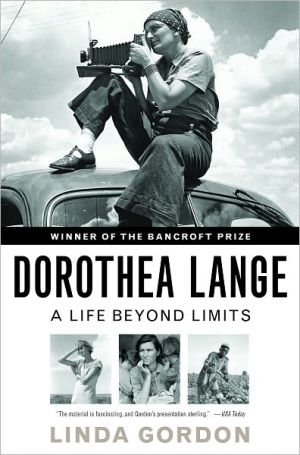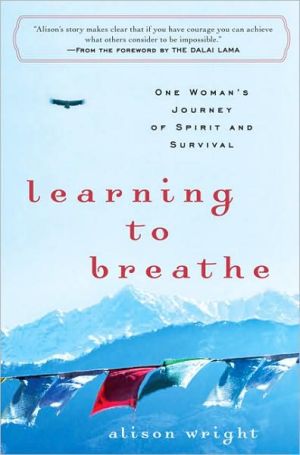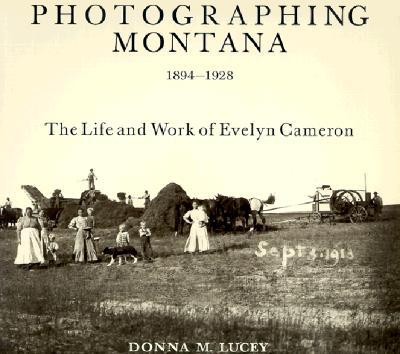Dorothea Lange: A Life Beyond Limits
Winner of the 2010 Bancroft Prize and finalist for the 2009 Los Angeles Times Book Prize in Biography: The definitive biography of a heroic chronicler of America's Depression and one of the twentieth century's greatest photographers.\ We all know Dorothea Lange's iconic photos—the Migrant Mother holding her child, the shoeless children of the Dust Bowl—but now renowned American historian Linda Gordon brings them to three-dimensional life in this groundbreaking exploration of Lange's...
Search in google:
Winner of the 2010 Bancroft Prize and finalist for the 2009 Los Angeles Times Book Prize in Biography: The definitive biography of a heroic chronicler of America's Depression and one of the twentieth century's greatest photographers.The New York Times - David OshinskyGordon expertly analyzes the political culture of Depression-era California, where the enormous power of big agriculture kept tens of thousands of landless workers in peonage and despair. She portrays Lange as an ambivalent radical, deeply sympathetic to the plight of the migrants yet uncomfortable with the chaos that social conflict inevitably produced…Gordon's elegant biography is testament to Lange's gift for challenging her country to open its eyes.
Introduction "A Camera Is a Tool for Learning How to See ..."Pt. I Hoboken and San Francisco 1895-1931Scene 1 31 Child of Iron, Wounded 42 Apprentice to the City 213 Becoming a Photographer 424 Maynard Dixon, Bohemian Artist 655 Working Mother in Bohemia 75Pt. II Depression and Renewal 1932-1935Scene 2 1036 Leaving the Children, Leaving the Studio 1057 A New Deal for Artists 1218 Paul Schuster Taylor, Maverick Economist 1409 The Romance of Love, the Romance of the Cause 15510 Blending a Family 175Pt. III Creating Documentary Photography 1935-1939Scene 3 19111 Father Stryker and the Beloved Community 19312 On the Road: California 20913 Migrant Mother 23514 On the Road: The Dust Bowl 24415 On the Road: The South 25916 An American Exodus 27917 Dorothea and Roy 287Pt. IV Wartime 1939-1945Scene 4 30318 Family Stress 30519 Defiant War Photography: The Japanese Internment 31420 Unruly War Photography: The Office of War Information and Defense Workers 327Pt. V Independent Photographer 1945-1965Scene 5 34321 Surviving in the Cold 34522 Working for Life 36623 Diplomat's Wife 38224 To a Cabin 40125 Photographer of Democracy 423Lange's Photograph Captions 431Acknowledgments 435Note on Photographs and Quotations 437Notes 439Photograph Sources 519Index 523
\ Vogue“A richly human portrait of the eminent photographer whose luminous Depression-era images had the democratizing impact of a Steinbeck novel.”\ \ \ \ \ The New York Times Book Review“Gordon's elegant biography is a testament to Lange's gift for challenging her country to open its eyes.”\ \ \ USA Today“The material is fascinating, and [the] presentation sterling.”\ \ \ \ \ David OshinskyGordon expertly analyzes the political culture of Depression-era California, where the enormous power of big agriculture kept tens of thousands of landless workers in peonage and despair. She portrays Lange as an ambivalent radical, deeply sympathetic to the plight of the migrants yet uncomfortable with the chaos that social conflict inevitably produced…Gordon's elegant biography is testament to Lange's gift for challenging her country to open its eyes.\ —The New York Times\ \ \ \ \ Publishers WeeklyReviewed by Kirstin Downey \ Historian Linda Gordon presents us with a portrait of the artist as a woman in her fascinating new biography of photographer Dorothea Lange [1895-1965], who captured the images of Americans on the move during the Great Depression.\ Lange's most famous picture features a migrant woman in California, a refugee from the Dust Bowl. She sits by the side of the road in her lean-to tent, her children draped on her body, hanging from her haggard frame like dead weights, as she stoically looks out into the distance.\ But the book's central focus is the journey made by the woman standing behind the camera lens. Lange was raised on New York City's Lower East Side and overcame obstacles almost from the start. During her childhood, her parents separated, which Dorothea experienced as a desertion by her father, and a bout of childhood polio left her with a permanent limp. She spotted an opportunity, however, in photography, which was a burgeoning new art field. Dorothea apprenticed herself to a master to learn the craft, giving herself a new identity. She dropped her childhood name, Dorothea Nutzhorn, and adopted her mother's maiden name instead.\ She further redefined herself after making a westward trek in 1918. Within two years, she emerged as a prosperous society photographer in San Francisco who specialized in portraiture of the city's elite, but that work dried up in the 1930s. Lange shifted course again, becoming a documentary photographer for New Deal programs. From 1935 to 1941, Lange was virtually a migrant worker herself, traveling from place to place, photographing farm workers in fields and primitive labor camps.\ Gordon wrestles with the issue of howLange dealt with her role as a woman in a society where family burdens are disproportionately borne by females. Raising a large brood of children and stepchildren, Lange frequently had to put her own work aside to run the household. She also became the primary breadwinner for her first husband, cowboy artist Maynard Dixon, and later supported the career of her second husband, economist and diplomat Paul Taylor, despite her own failing health.\ Lange privately railed at her family obligations. She shipped the children away when their care conflicted with her schedule or that of her respective husbands. And sometimes she could be cruel: she took revenge on her adolescent stepdaughter, whose father dumped her in Dorothea's lap for months at a time, criticizing and carping at her and photographing her in ways that an adolescent girl would likely have found humiliating.\ Dorothea Lange's talented eye brings the Great Depression home for us even today, but an observer might suggest that Dorothea, despite her fame and talent, was as much a captive of a woman's societal roles as the migrant mother she so brilliantly photographed. (Oct.)\ Kirstin Downey is a former staff writer at the Washington Post and author of The Woman Behind the New Deal: The Life of Frances Perkins, FDR's Secretary of Labor and His Moral Conscience (Doubleday/Talese).\ \ \ \ \ \ Kirkus ReviewsRiveting portrait of one of America's most renowned photographers. In addition to providing insight into Dorothea Lange's private life (1895-1965) and professional development, Gordon (History/New York Univ.; The Great Arizona Orphan Abduction, 1999, etc.) explores the wider context in which she lived and worked. The author's careful scholarship reveals the connection between Lange's work and the sociopolitical environment surrounding her, while still portraying her as a normal, flawed human being. Lange is famous for her Depression-era photographs of breadlines and migrant farm workers, yet her career also spanned two World Wars, the rise of fascism and communism, the beginnings of feminism and the civil-rights movement. A successful portrait photographer in San Francisco for more than a decade, Lange left behind her thriving business in the mid-1930s to pursue documentary photography in pursuit of social justice. Because Lange kept no personal papers or diaries prior to 1935, however, Gordon makes several educated guesses about events during this largely undocumented period; the author's periodic interjections alert readers to the differences between known fact and authorial supposition. Gordon deftly leads readers through the labyrinth of Lange's life-her apprenticeships with Arnold Genthe and Clarence White, her marriage to painter Maynard Dixon, her work with the Farm Security Administration during the Depression-providing a personal, intimate tour of the photographer's life and work. Though largely sympathetic, Gordon doesn't shy away from depicting Lange's sometimes questionable decisions regarding her personal life. A rigorously constructed, entertaining biography. Author tour toNew York, Washington, D.C., San Francisco\ \ \ \ \ Patricia Bosworth“A riveting, massively researched biography of a remarkable woman and great photographer. It's also an invaluable, cultural history of America from San Francisco's Bohemia of the 1920s to the Great Depression through WWII. Gordon tells us some amazing stories of such legendary photographers as the 'Migrant Mother,' and she also documents Lange's study of the Japanese-Americans and their oppressive internment camps. This is an absolutely fascinating study and a must read.”\ \ \ \ \ George Chauncey“Linda Gordon, one of our greatest historians, gives us an engrossing portrait of Dorothea Lange. Every page of this magisterial biography sparkles with insight into Lange’s life, passions, photographic techniques and achievements—and into the lives of the dispossessed farmers, unemployed laborers, and incarcerated Japanese-Americans who were her greatest subjects.”\ \ \ \ \ Gary Gerstle“An astonishing and deeply moving biography of Dorothea Lange, America’s foremost social photographer. No other account can rival this one for its engagement or for its dissection of the passions, injuries, and hopes that impelled Lange to challenge the boundaries of gender, race, and family. Linda Gordon writes about her complex subject with sophistication, frankness, and sensitivity. In the process, Gordon demonstrates yet again that she is among the most gifted and probing historians of our time.”\ \ \ \ \ Diane McWhorter“As Dorothea Lange’s biographer, Linda Gordon is fortunate that Lange’s private life was as complex—exceptional yet archetypal—as the history she documented in her photographs. The resulting book is superb social history rendered through a remarkable artist and personality.”\ \ \ \ \ Elle“[A] masterly biography that illustrates the personal and professional struggles and achievements of a woman who was ahead of her time and who remains overshadowed by her work.”\ \ \ \ \ The New Yorker“[An] absorbing biography....Gordon's accounts...are equally perceptive and, ultimately, sympathetic.”\ \






